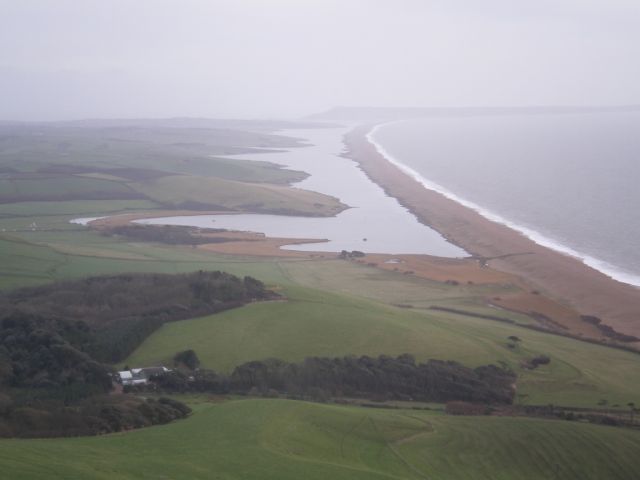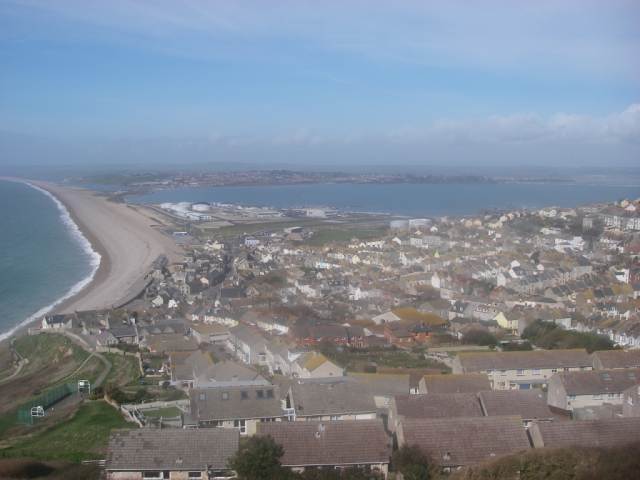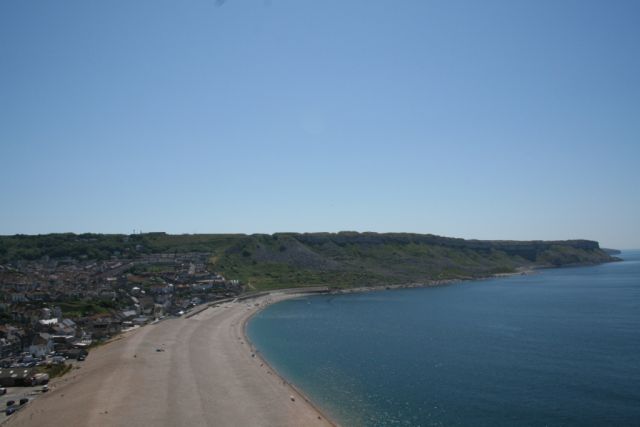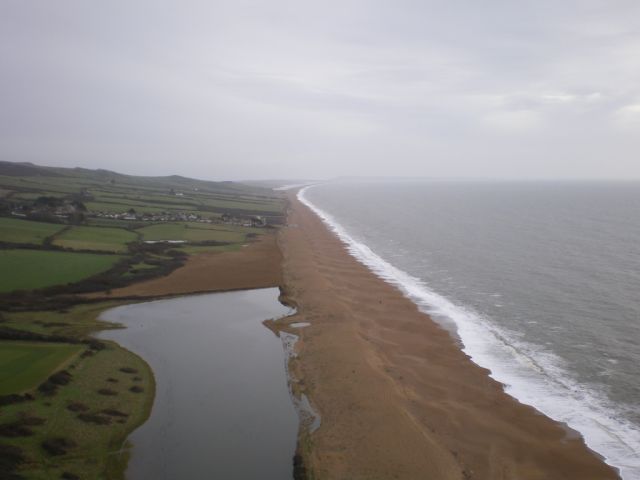|

Chesil Beach looking eastwards towards the Isle of Portland, which is just visible in the distance.

Chesil Beach at it's easten end, where it joins the Isle of Portland to the mainland. The village of Chiswell is in the foreground. The oil terminal is no longer there and the site is being redeveloped to host the sailing events at the 2012 Olympic Games. The Fleet Lagoon is just visible to the left of the image.

Chesil Cove, at the eastern margin of Chesil Beach. This image shows the precarious location of some of the houses in Chiswell, which lie below sea level and which are vulnerable to coastal flooding by both peroclation and over-topping. Major flood defences have significantly reduced the risk. Berms (strom ridges) are clearly visible on this section of the beach.
